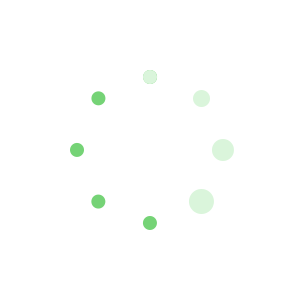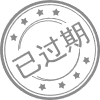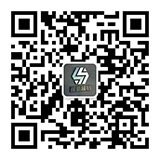小学六年级英语知识点归纳
一般过去时的概念:
一般过去时表示过去某个时间发生的动作或存在的状态。常和表示过去的时间状语连用。如:last year,yesterday等;也可表示过去经常反复发生的动作,常和often, always等频率副词连用。
例如:
①I saw him in the street yesterday. 昨天我在街上看见他了。
②Li Mei always went to school on foot last year. 去年李梅总是步行上学。
一般过去时的构成:
我们主要来学习谓语动词为实义动词的一般过去时的构成。
动词过去式的构成:
(1)规则动词过去式的构成有四条规则:
① 一般在动词原形末尾直接加上-ed。如:look-looked。
② 以不发音的字母e结尾的动词,去e再加-ed。如:live-lived。
③ 末尾只有一个辅音字母的重读闭音节,先双写这个辅音字母,再加-ed。如:stop-stopped。
④末尾是辅音字母+y结尾的动词,先变y为i,然后再加-ed。如:study-studied。
(2)不规则动词的过去式需特殊记忆。如:am(is)-was, are-were, go-went, come-came, take-took,have (has)-had等。
一般过去时的几种句型:
肯定句结构为:主语+动词的过去式+。如:He went to the toy store yesterday. 他昨天去玩具店了。
否定句结构为:主语+did not (didn't)+动词原形+其它。如:He didn't go to the toy storeyesterday. 他昨天没去玩具店。
一般过去时的一般疑问句的构成:Did+主语+动词原形+其它。如:
(1) -Did you go to Beijing last week?
-Yes, we did. (No, we didn't.)
(2) -Did you meet the businessman before?
-No, I didn't. (Yes, I did.)
一般过去时的特殊疑问句的构成:疑问词+did+主语+动词原形+其它。如:
(1) -What did you do last night?
-I did my homework.
(2) -Where did you go last week?
-I went to Shanghai with my parents.
小学六年级英语知识点
What is he/she wearing? He/She is wearing a pink and white blouse.
他/她穿了什么?他/她穿了一件粉白相间的上衣。
I like your skirt. Thanks! Is it new? Yes! It was abirthday gift from mymom.
我喜欢你的短裙,谢谢!它是新吗?是的!它是我妈妈送给我的生日礼物。
Whose hat is this? Is this your hat ? No! It’s not mine. It’s Kim’shat.
这是谁的帽子?是你的帽子吗?不,它不是我的,它是凯米的帽子。
Whose gloves are these? Are these your gloves? This is a pair ofshorts.
这是谁的手套?这是你的手套吗?这是一双鞋。
What day is it? It’sSunday . We don’t go to school . I like Sundays.
今天星期几?今天星期日。我不想去学校。我喜欢星期天。
This housecocat is too big! These pyjamas are too small! Thesenew slippersare just right!
这件睡衣太大了。这件睡衣库太小了。这双新托鞋正好合适。
Jenny is wearing a dress and a pair of boots.珍妮穿了一件连衣裙和一双靴子。LiMing iswearing a hat, a scarf, a coat, a pair of pants and a pairof pants and a pair ofshoes.李明戴了一顶帽子,一条围巾,一件外衣,这条裤子和一双鞋子。Danny is wearing a pair of pyjamas and a pairof slippers.丹妮穿了一件睡衣裤和一双托鞋。
Let’s play a game. Let’s make a bedroom. What’s in yourbedroom? There is abed ,a dresser and a TV.
让我们做游戏吧。让我们制作一个卧室吧。在你的卧室有什么?有一张床,一个梳装台和一台电视。
Where is the dresser?梳装台在哪儿?It’s beside the bed.它在床的对面。
Where is the picture? It’s above the desk. Where is thedresser? It’sbetween the bed and the desk.
图画在哪儿?在桌子的上面。梳装台在哪儿?它在床和书桌中间。
Where is the lamp? It’s on the desk. Where is the desk? It’sbelow thepicture.
台灯在哪儿?它在书桌上。书桌在哪儿?它在图画的下面。
Where is the ball ? It’s under the chair. Where is the bed?It’s beside thedresser. I walk home after school.
球在哪儿?它在椅子的下面。床在哪儿?它在梳装台的旁边。放学后我步行回家。
What do you do at home? I watch TV after supper. I play on thecomputer. Ilisten to the radio in my bed.
你在家干什么?晚饭后我看电视。我玩电脑。我在床上听收音机。
I talk on the phone with my friends. The teddy bear is in thedresser. I puton my clothes.
我用电话和朋友聊天。玩具熊在梳装台里。我穿衣服。
What do you do in the morning? On Saturday afternoons,I like toplay with myfriends. We fly kites.
早晨你在干什么?在星期六的下午,我喜欢和我的朋友们玩,我们放风筝。
Where are you going? I’m going to the library. Is that far fromhere? No.It’s across from the hospital.
你要去哪儿?我去图书馆。离这儿远吗?不远。它就在医院的对面。
Where is the gym? Go straight down this street and turn left atthe trafficlights. I’m lost!
体育馆在哪儿?沿着这条街直走在交通灯处向左转。我迷路了。
Is the library far from here? No. It’s just up the stairs! Ican show you.Let me help you. Follow me.
图书馆离这儿远吗?不远,它就在楼上。我指给你看。让我帮你吧。跟我来.
The library is near the school. The library is far from thezoo. What arethey doing?
图书馆就在学校附近。图书馆离动物园很远。
Jenny’s father is driving a car. I have a headache. I want tosee a doctor.Do you have a map?
珍妮的爸爸正在开汽车。我头疼,我想去看医生。你有地图吗?
How’s the weather in January?The weather is cold.What do youwant to do?Iwant to go to the park to fly a kite.
一月的天气怎么样?很冷。你想去干什么?我想去公园放风筝。
Where are you going? To the supermarket. May I help you? Yes. Iwant to buya pair of shoes.
你要去哪儿?去超市。我可以帮你吗?是的,我想买一双鞋。
Where does a businessman work? A businessman works in an officebuilding.What does your mother do?
商人在哪儿工作?商人在办公楼里工作。你的妈妈是做什么的?
She is a clerk. Let’s go to the cinema to see a film. May Ihelp you? Yes! Iwant to buy a dress. I’ll show you
她是一名售货员。让我们去电影院看电影吧。我可以帮你吗?是的,我想买一件连衣裙。我指给你看。
This way, please. What do you want to do? Let’s go shopping.What do youwant to buy? I want to buy a book.
这边请。你想干去什么?让我们去购物吧。你想买什么?我想买一本书。
小学六年级英语必备知识点
一、重点词汇:
hobbyride a bike骑自行车 dive跳水 play the violin拉小提琴
make kites制作风筝 collect stampslive居住 teaches教
Watches观看 goes去 does doesn’t=does not
city 城市 county 国家或者乡村 province 省
二、重点句型:
1.What’s your hobby? 你的爱好是什么?
2.I like collecting stamps. 我喜欢集邮。
3.He likes collecting stamps, too.他也喜欢集邮
4.Does she teach English? No, she doesn’t. 她教英语吗? 不。
5.Does she teach you math? Yes, she does.她教你数学吗? 是的。
三、重点语法:
1、动词变为动名词的规则:
动词变为动名词,即是动词加ing。一般要遵循以下三条规则:
(1)一般情况下,在动词的后面直接加ing。如:play-playing read-reading do-doing go-going
(2)以不发音的字母e结尾的动词,要去掉不发音的字母e,再加ing。如:write-writing ride-riding make-making dance-dancing
(3)以单元音加单辅音结尾的重读闭音节,要双写最后一个辅音字母,再加ing。如:run-running swim-swimming put-putting sit-sitting
2、记住like后面要加动词ing,说爱好有三种说法:
①I like swimming
②Swimming is my hobby
③My hobby is swimming
注意:She likes drawing pictures, listening to music and makingkites.这几个爱好是并列的,都是在like后面,所以都要加ing.
3、第48页是写自己或者笔友的模板4、第49页是写自己或者是其他人一天的作文模板,记住要用一般现在时态。
4、关于第三人称单数:
动词变为第三人称单数形式的规则:
(1)在一个中,如果主语人称既不是你,也不是我,而是另外的一个人,这时的人称叫做第三人称单数。
(2)在第三人称单词的句子中,动词要使用第三人称单词形式。
(3)动词变为第三人称单数形式,要遵循以下规则:
①一般情况下,在动词的后面直接加s。如:
read--reads make-makes write-writes
②以字母s, x, o , sh ,ch结尾的动词,在词尾加es。如:do-does wash-washe teach-teaches go-goes pass-passes
③以y结尾的动词分为两个情况,以元音字母加y结尾的动词,在词尾直接加s。如:play-plays buy--buys
以辅音字母加y结尾的动词,要把y变为i,再加es.如:study--studies
④以f , fe结尾的名词,先把f,fe变为v,再加-es.
⑤特殊变化:have--has
(4)在一个第三人称单数的句子中,只要句子中出现了does或者其否定形式doesn't.该句子中的其他动词就要使用原形。
(5)第三人称单数的肯定句在变为否定句时,在动词的前面加doesn't. 动词恢复原形。如:He lives in Beijing.---Hedoesn't live in Beijing.
(6) 第三人称单数的陈述句在变为一般疑问句时,用does开头,后面的动词也要变为原形。如:He lives in Beijing.---Doeshe live in Beijing?注意:用来does,后面的动词就不能用第三人称形式。
5、注意几个单词的变化:hobby(复数形式)-hobbies haveto()-mus same()---different look the same 看起来一样





